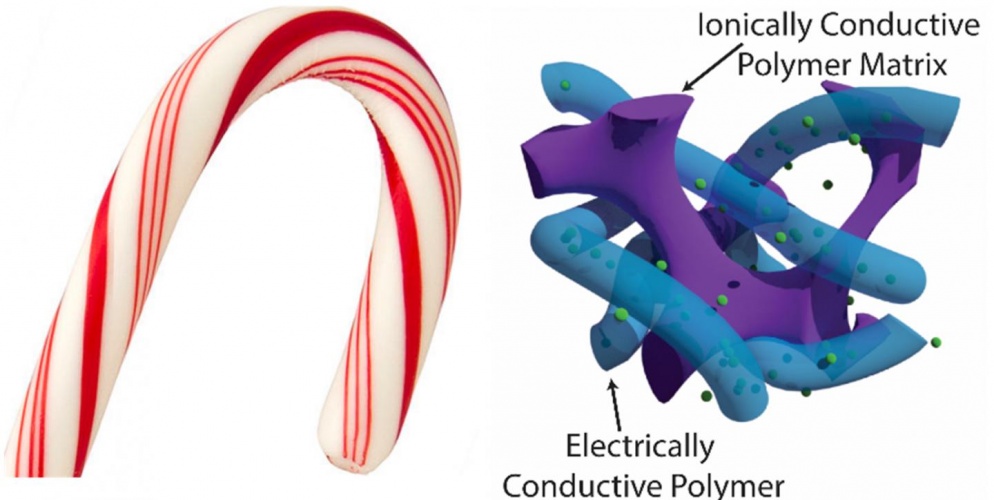
(Credit: Stoyan Smoukov)
According to the team, the electrode is capable of energy storage close to the theoretical limit, while also being flexible and durable over repeat cycles. These properties are a result of the polymer’s ‘candy cane’ structure, whereby the ionically conductive and electrically conductive strands are interwoven on a nanoscale level.
"Our supercapacitors can store a lot of charge very quickly, because the thin active material (the conductive polymer) is always in contact with a second polymer which contains ions, just like the red thin regions of a candy cane are always in close proximity to the white parts,” said project leader Stoyan Smoukov.
“But this is on a much smaller scale. This interpenetrating structure enables the material to bend more easily, as well as swell and shrink without cracking, leading to greater longevity. This one method is like killing not just two, but three birds with one stone."
Growing polymers as nanostructures can increase the amount of accessible material near the surface, but this can be expensive, hard to scale up, and result in poor mechanical stability. The researchers were able to interweave nanostructures within a bulk material, achieving the benefits without using complex synthesis methods or sacrificing material toughness.
The interpenetration also brings flexibility and toughness because the interfaces stop growth of any cracks that may form in the material. According to the researchers, it allows the thin regions to swell and shrink repeatedly without developing large stresses, so they are electrochemically resistant and maintain their performance over many charging cycles.
The team is currently exploring a range of materials that can be adapted for the ‘candy cane’ system for even better peformance. Potential uses for the supercapacitors include embedded electronics in smart clothing, wearable and implantable devices, and soft robotics. The research is published in ACS Energy Letters.




Swiss geoengineering start-up targets methane removal
No mention whatsoever about the effect of increased methane levels/iron chloride in the ocean on the pH and chemical properties of the ocean - are we...